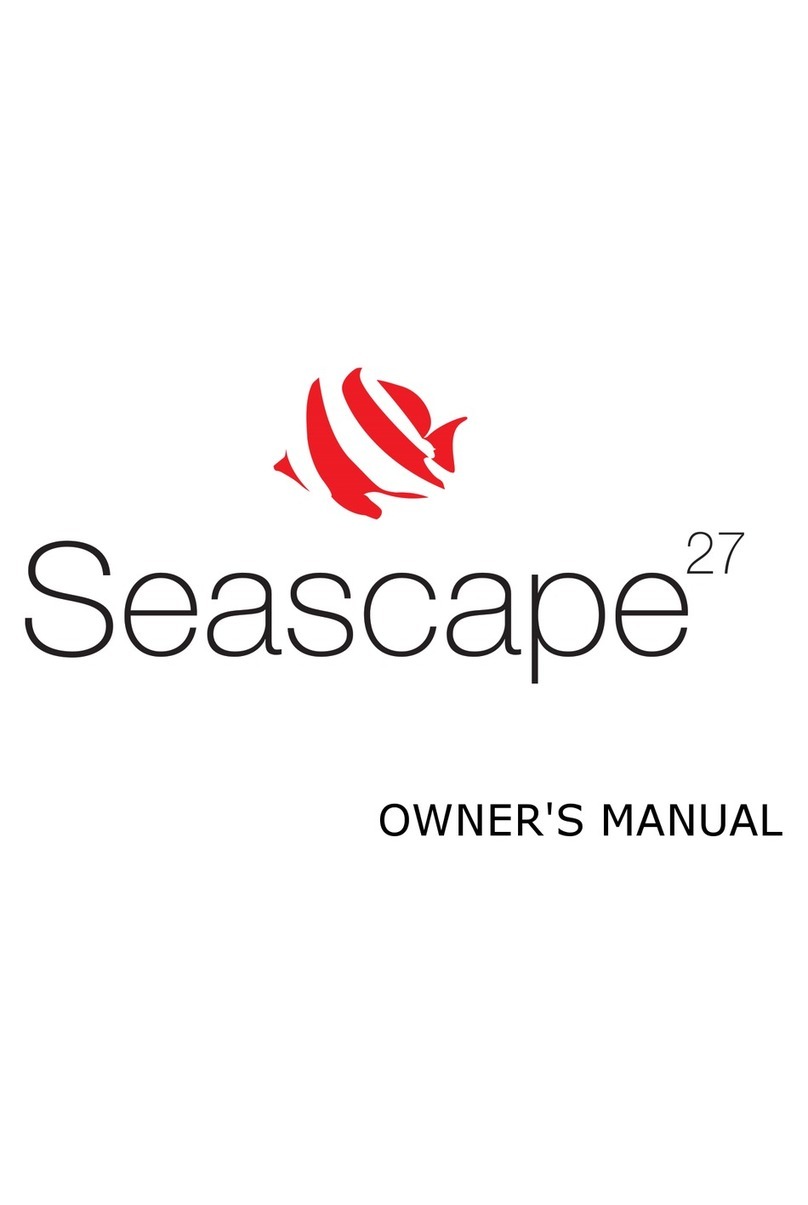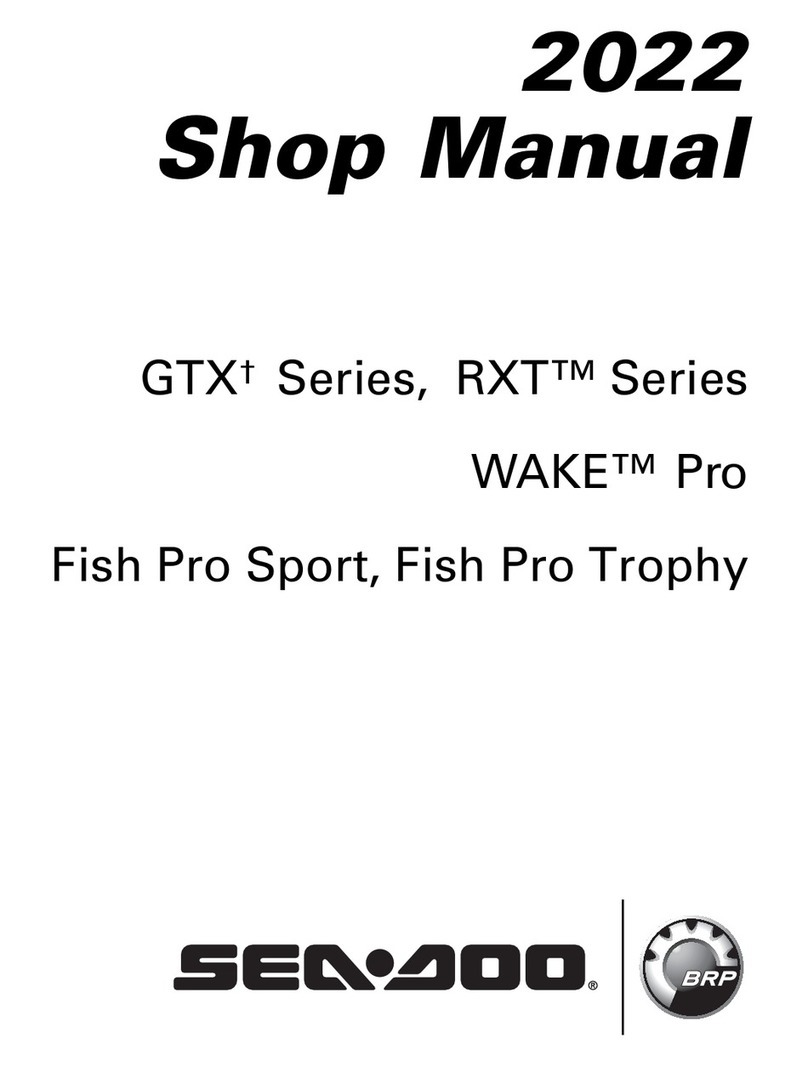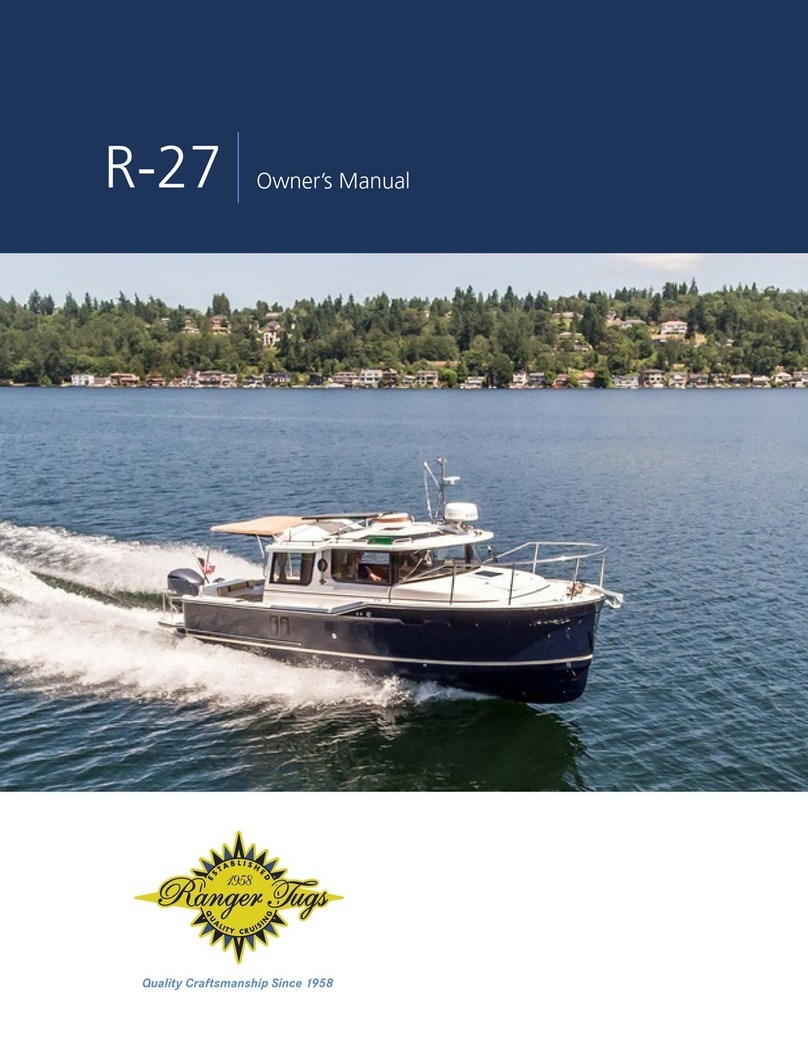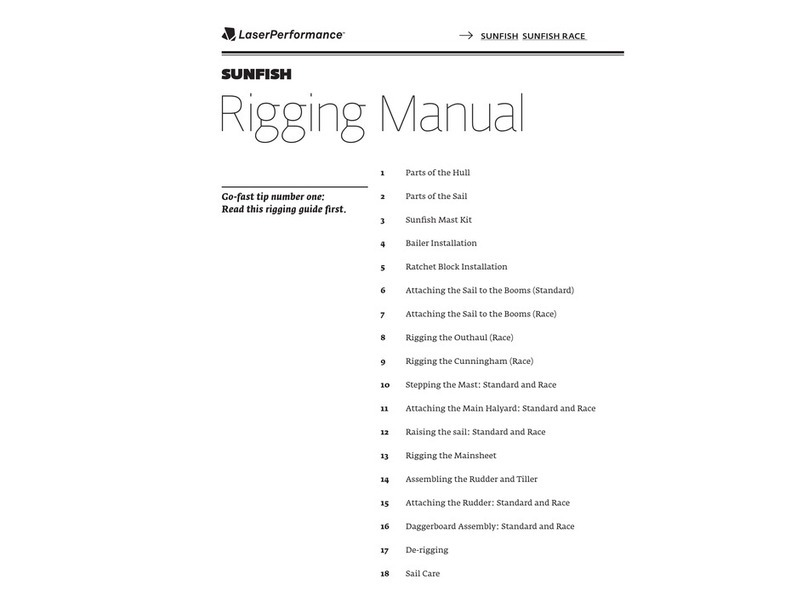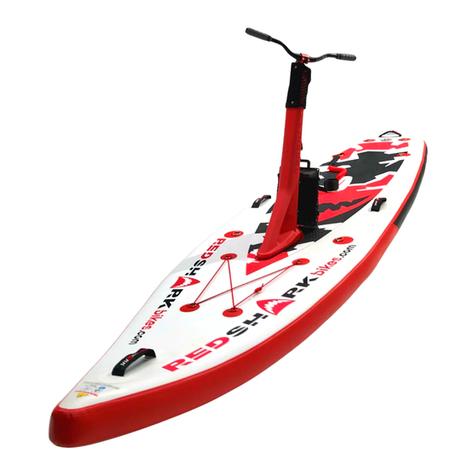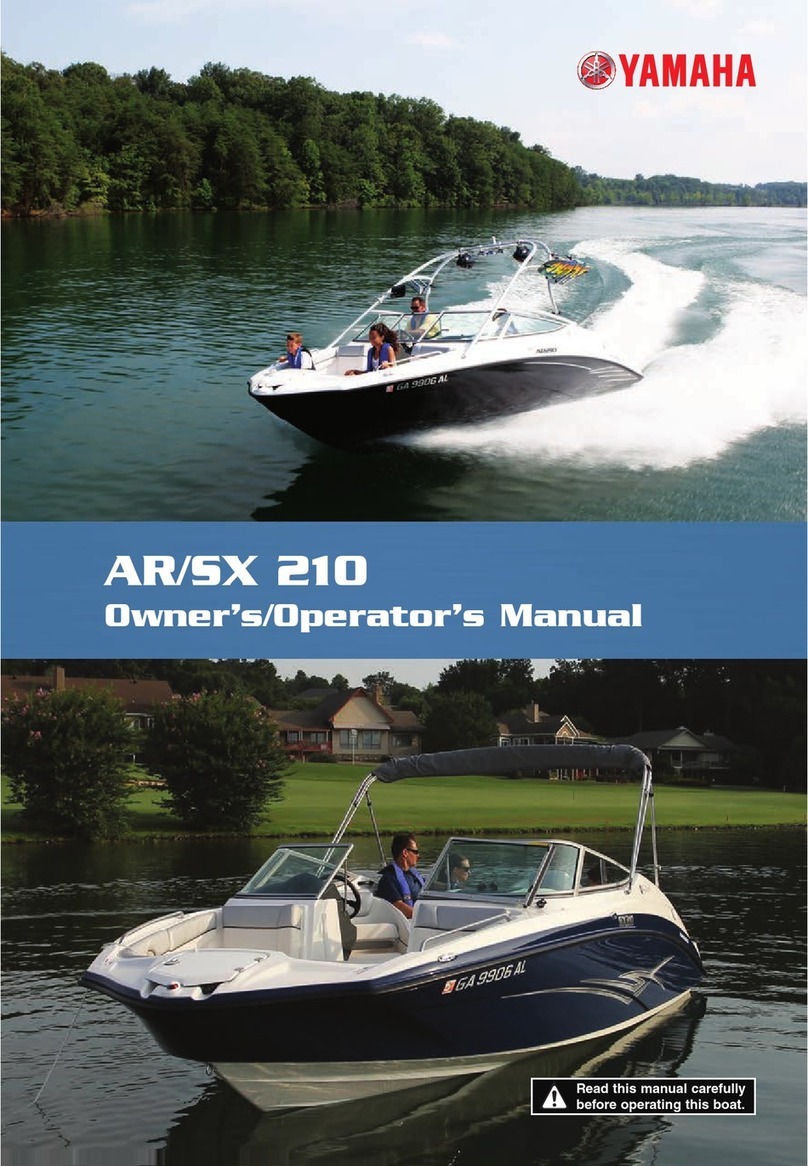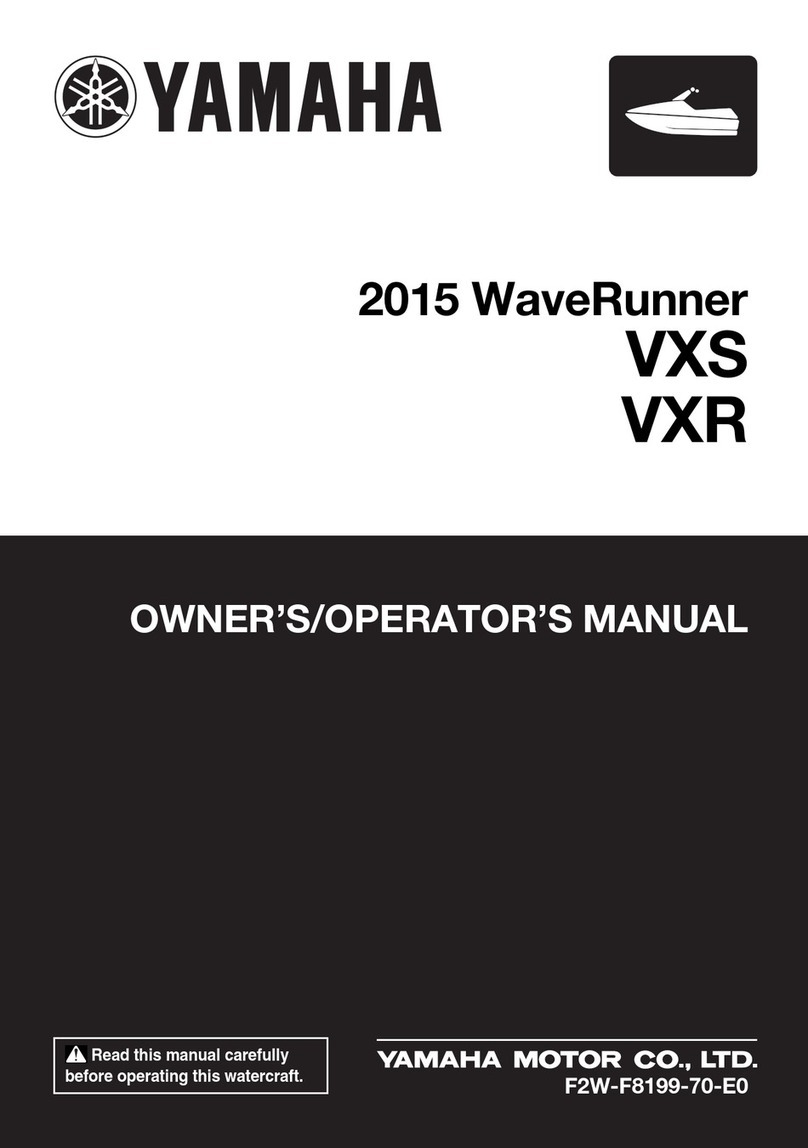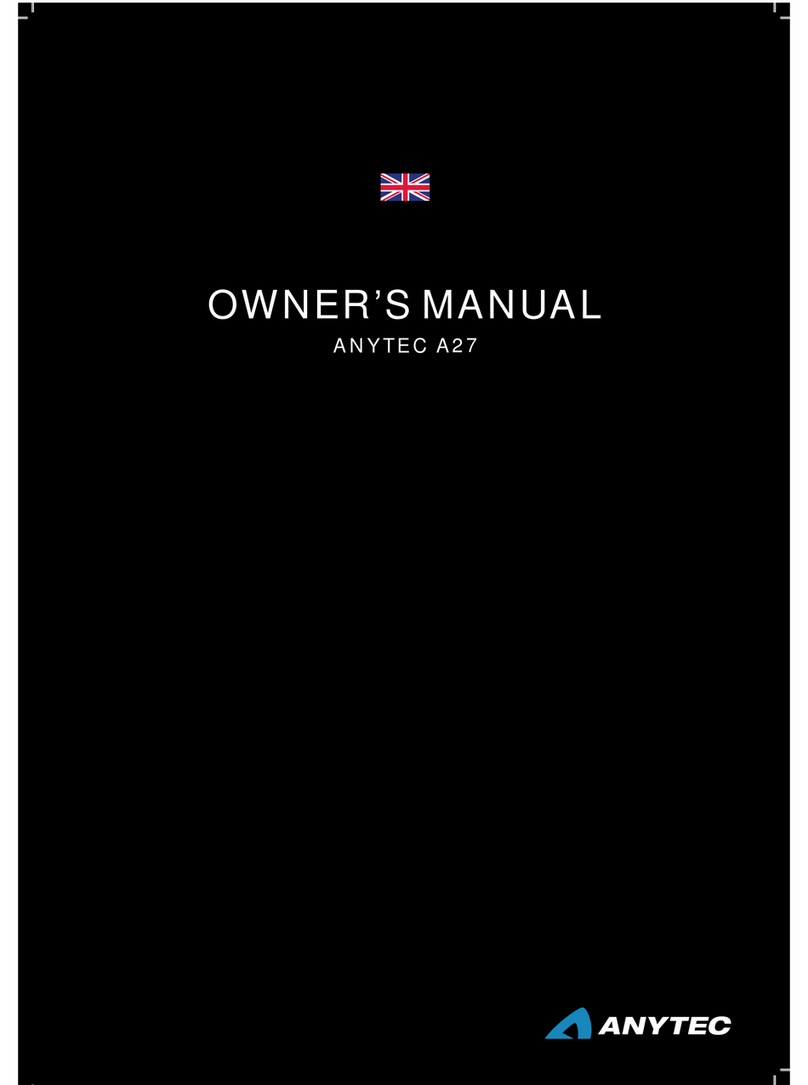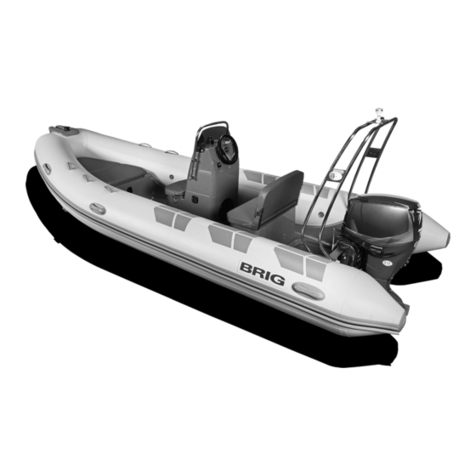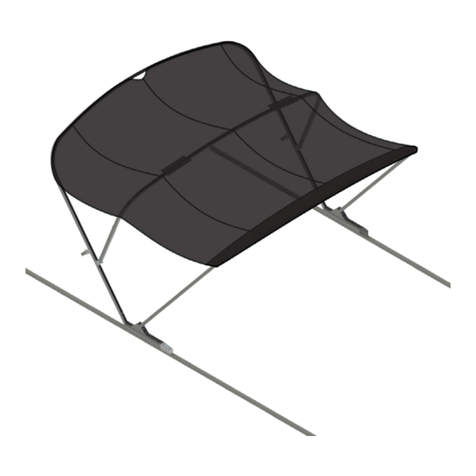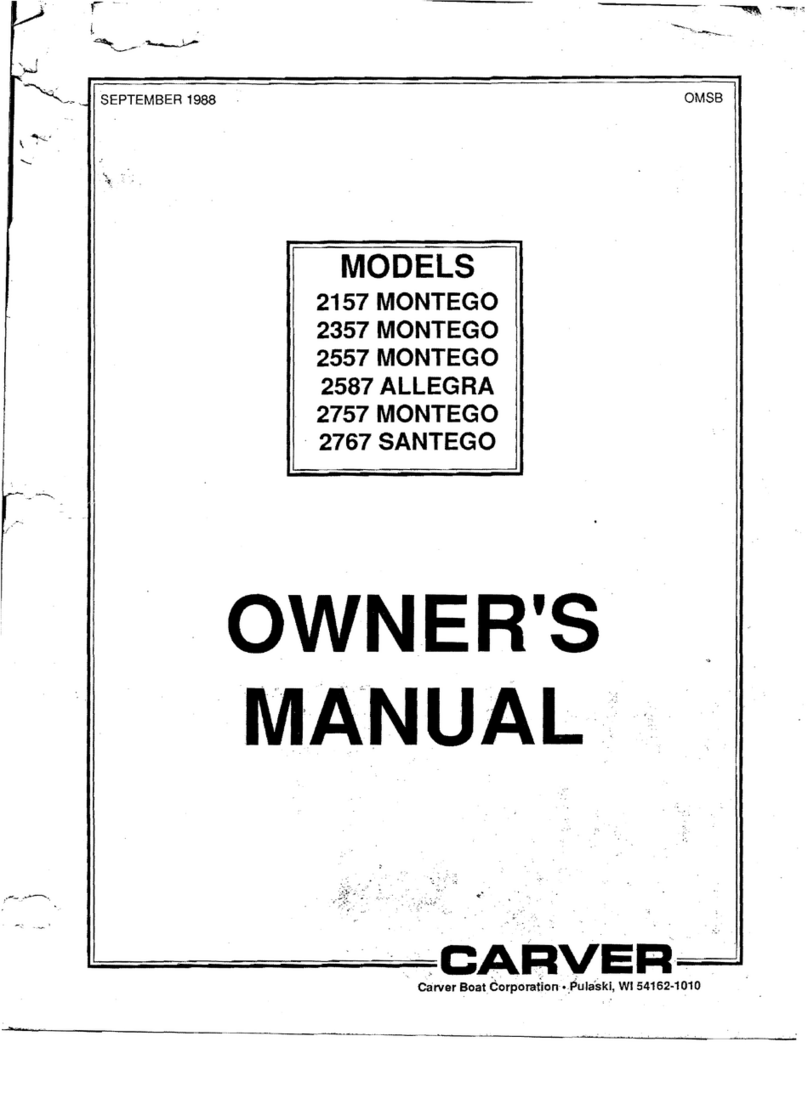Seascape 24 User manual

Assembly Manual
DRAFT
31 / 3 / 2017

2
0) The Equipment
Dear owner
You are holding the rst draft of the Assembly Manual for your brand new Seascape24. It was de-
signed to help you with the rst assembly of your boat. We also included some sections which should
help you with some tips and tricks regarding the launch, mast hoist and other operations you will
encounter while using her. As mentioned this is the rst draft which we plan to update on regular in-
tervals so check back to Knowledge base section of www.thinkseascape.com for the latest versions.
For technical details always refer to the Owners manual you received with your boat.
Fair winds and lots of fun
Yours Seascape

3
1) The Mast and Rigging
Content of the cardboard
box with small equipment.
Parts needed to assemble
your mast with standing and
running rigging.
Make sure you untwist the
halyards before installing
them.
Use the pilot line to pull the
halyard trough the mast tube.
Make sure to use electric
tape when you attach the
halyard to the pilot line.

4
Run the gennaker halyard
trough both thimbles.
In case you use the option of
masthead gennaker you only
use the top one.
This is the photo of the gen-
naker halyard prepared for
hoisting the mast.

5
Seascape 24 features 2:1
main halyard to reduce com-
pression on the mast tube.
Pin holes for spreaders are
make them asymmetric so
make sure you match the
markings on the spreaders
with those on spreader butts.
Use electric or Vulcanizing
tape to protect the Spreader
pins.

6
Unscrew turnbuckles from
the shrouds and forestay.
Make sure not to loose lock-
ing nuts.
Attach toggles with turnbuck-
les on the chain-plates and
secure the pins with electric/
vulcanizing tape.
Attach forestay toggle to the
jib furler and attach the furler
to the bow. Again make sure
to secure the split pins with
some tape.

7
Slide shrouds into the
spreader slots. Make sure
to tighten the screw which is
securing the shrouds in the
slot.
Attach the shrouds to the
mast hounds. When new
the hounds are quite close
to the mast so be careful not
to scratch the paint when
attaching the shrouds. They
will bend outwards after rst
use. Use electric tape to
protect the safety pins.
Attach the top jib furler on the
forestay hound and secure
the split pins with electric
tape.
Attach
Slide thicker (4mm) part of jib
halyard trough the block on
the furling mechanism and
pull it to the point where the
thinner part of the halyard
(3mm) reaches the block
(see next photo).

8
Pull the jib halyard to the
point where the thinner part
of the halyard reaches the
block on the furler.
Make sure that you always
end up with the loop of the
thicker end of the halyard
sticking out of the furler.
Tie the think and thin end
of the jib halyard together
so you don’t loose it when
stepping the mast.

9
2) Setting the mast using the A-frame
A frame comes with following
parts. It is powder coated so
make sure you don’t damage
the paint to prevent corro-
sion.
Slide the top part of the tube
into the bottom part of the
tube and secure it using the
pin. Make sure you tighten
the nuts all the way.
The aft support lines are
already attached to the top
of the A-frame. Use the
gennaker sheets for forward
support. Attach them to the
side rings on the top of the
A-frame.
Use composite shackle to
attach one of the blocks
Use Tack-line for the mast
hoist line. Run it trough the
thimble and tie the loose end
together.

10
Once the A-frame is ready
put the mast on the boat as
shown. After the rst assem-
bly of the mast when all the
halyards are already in place
you can assemble the mast
on the boat to simplify ma-
nipulation.
Use a fender on the coach
roof for supporting the mast
as you will reposition it in the
hoist position. (Left)
Attach the aft A-frame sup-
port lines on the pad-eyes as
shown on the photo (right)
Leverage the A-frame against
the stanchions and attach
the aft support lines on the
deck.

11
Reposition the mast to the
center of the boat and for-
ward as shown on the photo.
Prepare the forward support
lines - make sure they are
lead trough the triangle be-
tween the mast, the spread-
er and the V1 (top shroud).
Leverage the A-frame against
the stanchion and push/pull
it forward to lift it in vertical
position.

12
Move the legs of the A-frame
backwards...
So it is positioned roughly
20cm forward of the Shroud
chain-plates.
Attach front A-frame support
lines on the forward mooring
cleats.
Repeat the process on both
sides.
Double-check weather the
support lines are lead trough
the triangle of mast/spread-
er/top shroud.

13
Attach the hoist line on the
mast with a loop. Make sure
to leave a long tail on the
bowline so you can pull the
loop downwards after the
mast is hoisted. The loop
can jam under the lower
shroud hounds.
Lead the other end of the
hoist rope trough the mast
foot block and the clutch to
the winch.
The mast is a little bit top
heavy so keep slight pres-
sure on the foot while hoist-
ing. Use the Winch to lift the
mast.
Once the mast is raised
swing the mast foot over
the mast support and gently
lower it in place.
Keep a slight tension on the
hoist rope until you secure
the mast with the shrouds
and forestay.

14
Attach the shrouds and
forestay. Upper shrouds are
lead outside of the guardrail
while the lower shrouds are
lead inside.
When you are attaching the
turnbuckles make sure that
the threads are evenly lead
into the turnbuckles.
Put the rig under tension
using number 8 and 14 fork
key. Use the screwdriver
to help you x the forestay
furling drum as shown on the
photo. Set the forestay rake
as shown on the photo on
the right.
Recommended rig tensions
for the Seascape 24 as
measured with the Loos type
A tensiometer (supplied with
the boat).
Light Medium Heavy
Top shrouds (V1) 30
Lower shrouds D1) 20
Forestay
Forestay rake

15
3) The boom
The carbon ber boom (the
bare tube weighs only 3.8kg)
comes almost fully assem-
bled. You only need to feed
the reef lines using the pilot
lines (like with the mast hal-
yards). First reef should exit
on the right side of the goos-
neck (looking in the direction
of the boat). Second reef
should exit on the left.
The outhaul is already
installed and has a 5:1
purchase hidden within the
boom tube.

16
Attach the boom to goos-
neck as shown on the photo.
Attach the reef hooks around
the goos-neck pin.
Make sure to put the plastic
washer between the bot-
tom of the boom part of the
goos-neck and the mast
goos-neck.
Attach Main sheet A-frame
to Rope-eye loops using the
composite shackles.
Attach triple block on the top
of the A-frame.
Attach Main sheet A-frame
to Rope-eye loops using the
composite shackles.
Attach triple block on the top
of the A-frame.
Run the Main sheet trough
the purchase system...

17
And the Vang. Assemble it
as shown on the photo.
... and trough the Main sheet
ratchet. The arrow on the
block should be pointing
towards the trimmer.
To engage the ratchet turn
the red lever on both sides of
the block.
To engage automatic func-
tion slide the black slider
inside the red lever on both
sides of the block.
Attach the tail ends of the
vang cascade on the t-bone
attached to the mast foot.

18
4) The Pit
Looking at the picture from
right to left:
- Tack-line,
- Pole out
- Jib furling
- Gennaker
- 1st reef
- Cunningham
- Vang
- Outhaul
- 2nd Reef
- Main halyard
In case of “Classic jib halyard
option” there is additional
mast food block and a clutch
for jib halyard.
The mast foot with rope
arrangements.

19
5) The Sails
a) The Jib
Start by attaching the furl-
ing line to the furler and coil
drum full of the line onto the
furler. Guide the furling line
trough the thimble, guide
bridge on the deck and to
the cleat.
Attach Jib cunningham
System on the furler.
Attach jib tack on the furler.

20
Use the composite shackle
to attach both ends of the jib
halyard on the jib head.
Close the top of the zipper
and run the thin end of the
jib halyard trough the zipped
pocket.
Hoist the jib by pulling on the
thin part of the jib halyard
while closing the zipper as
the sail is hoisted.
Table of contents
Other Seascape Boat manuals


